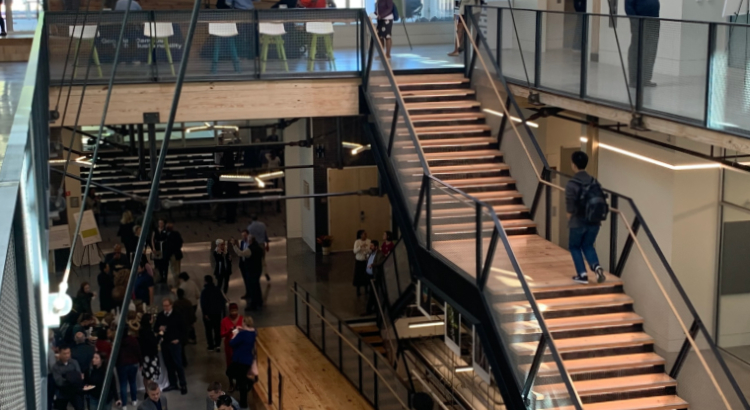If you didn’t know better, you’d think elevators were designed to spread coronavirus. Most require touching buttons. Then, riders must squeeze into a tight space where distancing is impossible.
Even well-ventilated elevators may contain air recirculated from a shaft filled with the respiration of everyone who rode that day.
Enter the monumental staircase. Living Buildings emphasize stairs because they promote physical activity and don’t use energy. Like many other LBC projects, the Kendeda Building for Innovative Sustainable Design put its main staircase in the center of the lobby. The elevator is tucked off to the side, behind a wall.
The idea is to make stairs the first choice for anyone capable of walking them. Denis Hayes, a leader on Seattle’s Bullitt Center, even dubbed its steps, which feature outside vistas, the “irresistible staircase.”
Of course, upper stories in high-rises will continue to be out-of-reach for casual climbers. For now, at least, an entirely new set of protocols should be in effect for elevators in those towers and elsewhere.
But, in any building under four or five levels, it’s time for those treads to get more of a work out. Just, be careful to wash your hands if you grab the banister.
— Ken Edelstein
This post is part of a series on “10 COVID-combating features in a Living Building.” Click here to view the main article.


